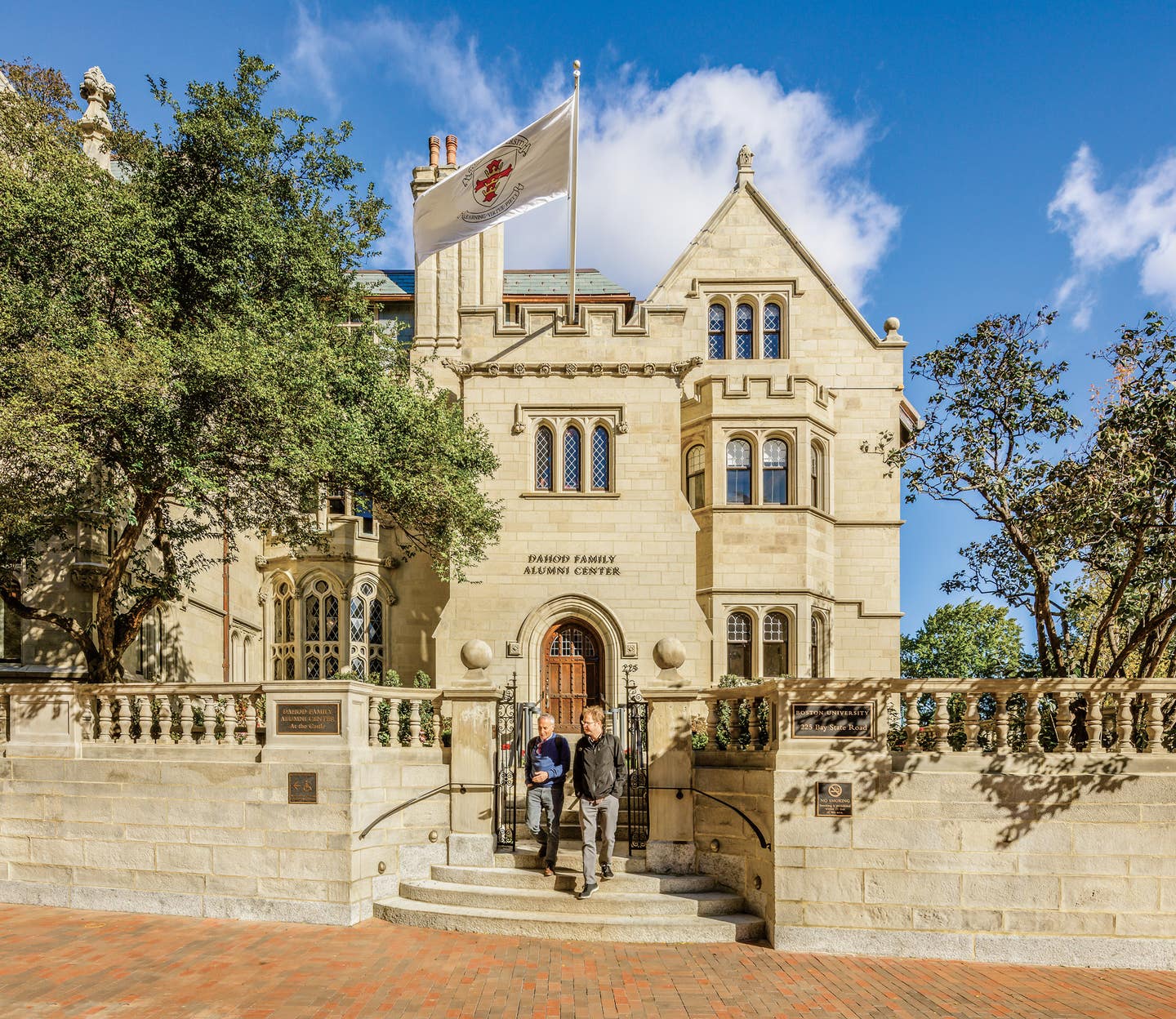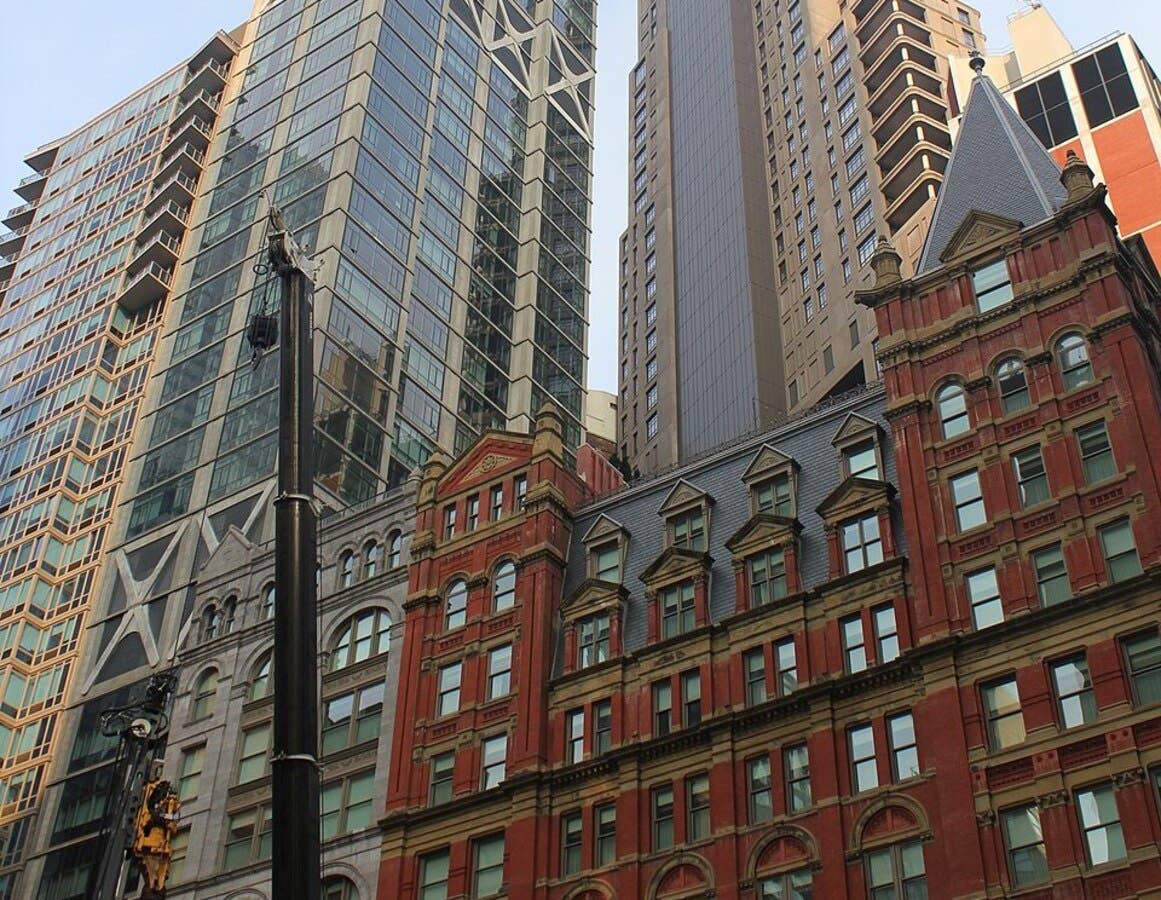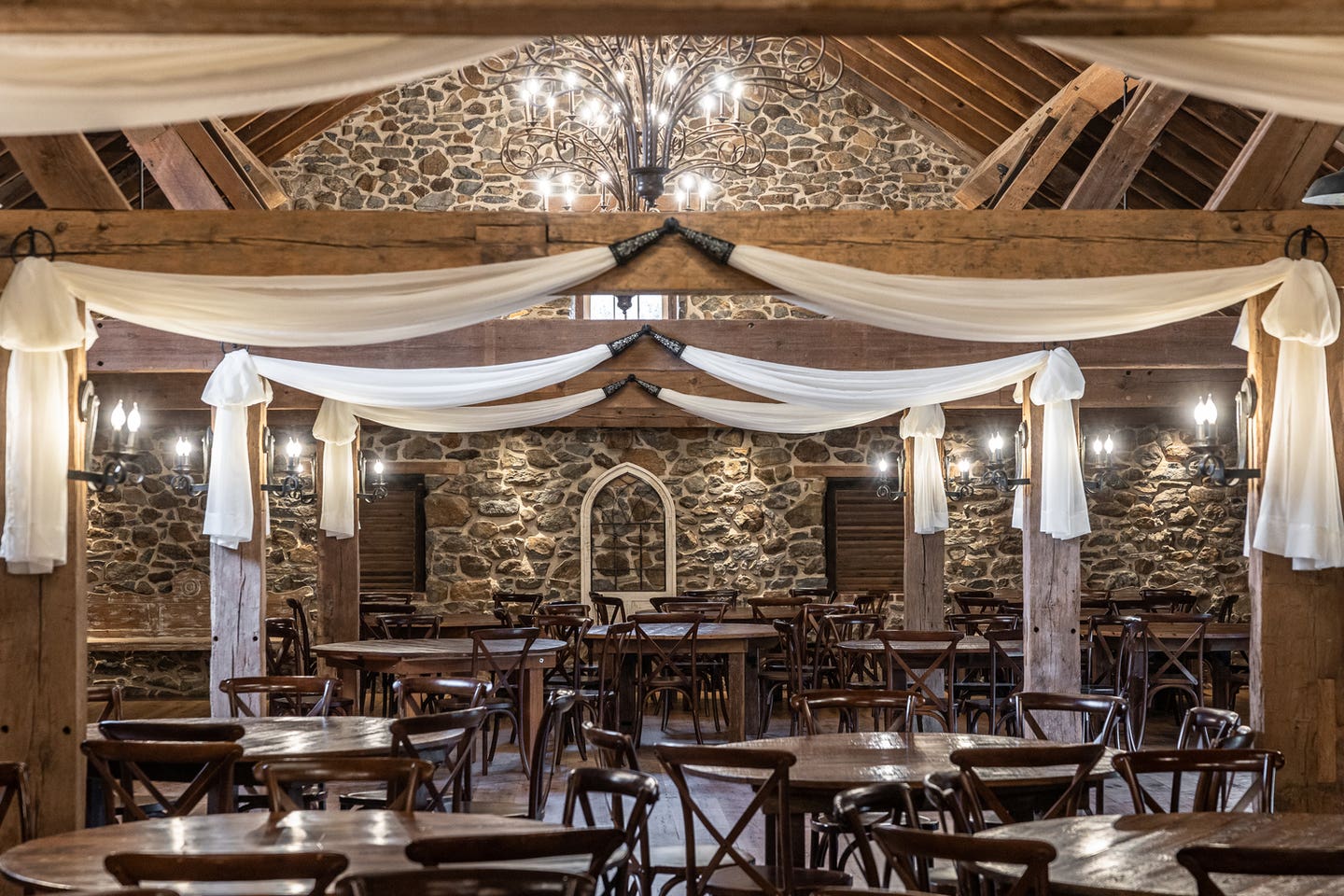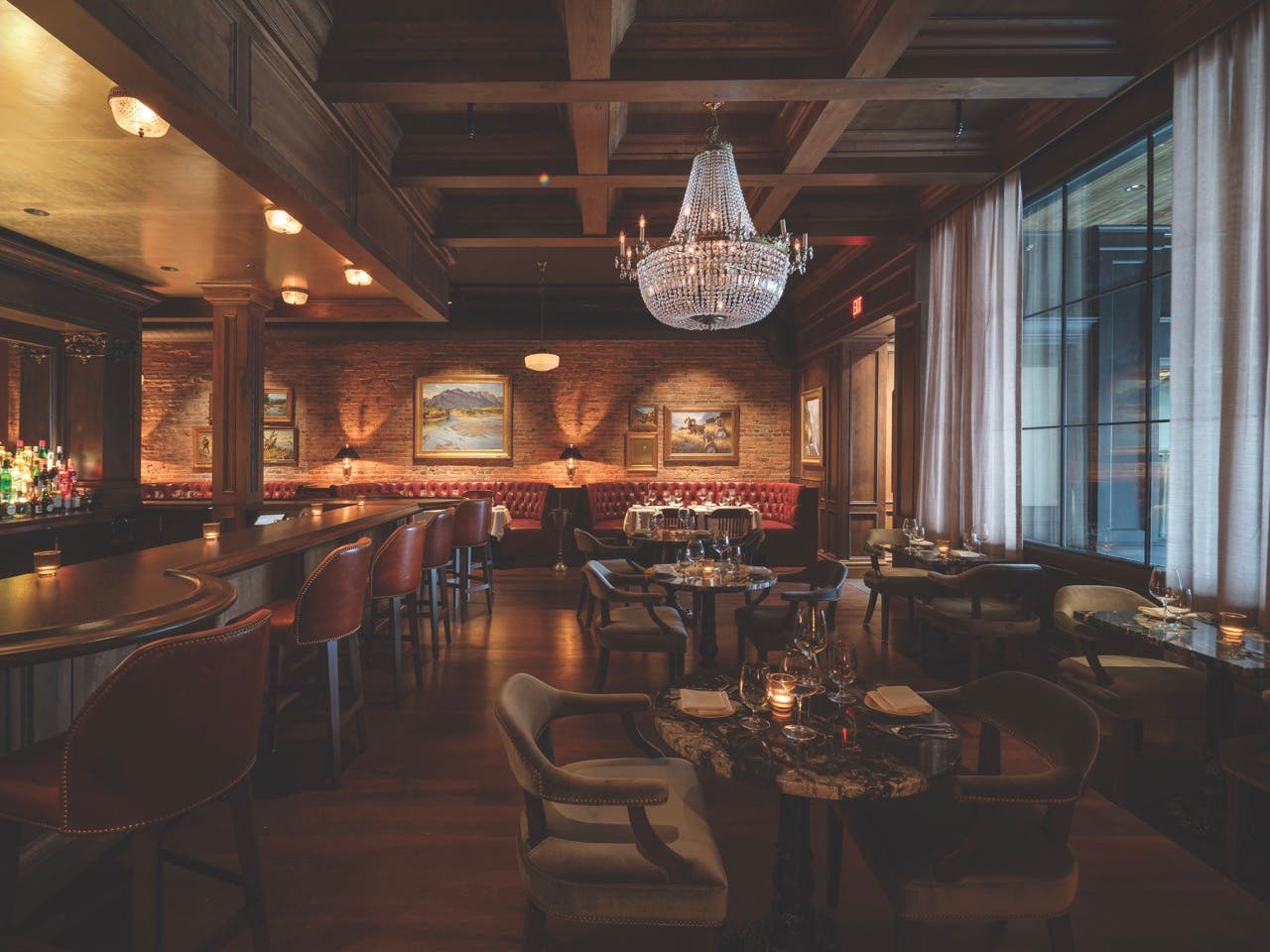
Restoration & Renovation
Boston University’s Iconic Castle
Project Castle at Boston University
Architect Finegold Alexander Architects
Built in 1915, this Tudor Revival-style mansion was originally a private residence belonging to businessman, playwright, and poet William Lindsey, Jr. Located at the corner of Boston’s Bay State Road and Granby Street, it is a part of the city’s Back Bay West Historic District. The 15,371-square-foot estate, designed by Chapman & Frazer, was modeled after Athelhampton Hall in Dorsetshire, England—a country frequented by the late Mr. Lindsey. In 1939, the Castle, as it is commonly called, was donated to Boston University, whereupon it housed school presidents and their families until 1967, at which point it was converted into a function hall. By 2015, it had seen better days.
“The building was at a point where a lot of deferred maintenance was coming to a head,” says Finegold Alexander Architects President Rebecca Berry. “It was time to do a major renewal/restoration, yet at the same time, there were some amazing historical interiors that were quite intact—they just needed a little buff and polish and some infrastructure to make them sing.” On the exterior, the sandstone masonry, slate roofs, and wood windows were key target areas. Water was infiltrating the walls, the roof was leaking, and the windows didn’t seal properly. Furthermore, the building was not ADA compliant, a considerable limiting factor in terms of the building’s proposed usage, namely the new Dahod Family Alumni Center.
The building would also need to accommodate a commercial kitchen, an expanded campus pub, a faculty dining room, and a historically sensitive new addition with a terraced roof. The plan called for locating the kitchen in the basement and adding a pub into a 1,000-square-foot addition at the rear of the building, which is not visible from the Historic District. “It was a matter of finding spaces in the building and determining what needed to be done to bring it back to its former glory,” Berry explains.
Resurrecting the façade
To start, the Finegold Alexander team conducted a comprehensive assessment of the building, with a focus on the exterior. “It was in worse shape than had been feared,” Berry recalls. “The masonry had some real pain points—eroded stone and loose gable-cap stones, which were a potential hazard.” The sandstone was meticulously cleaned and assessed and, in many areas, existing stones that had been worn beyond repair were replaced. Interestingly, stone pillars from a fence being removed to make way for the addition were salvaged and cut to make new stones used for repairs. The high level of difficulty is owed, in part, to the sandstone’s texture. To mimic it, masons hand hammered all new stone onsite.
As for the roof, it was removed entirely, down to the original sheathing, which was just boards. The team added a new layer of plywood to create a structural diaphragm for shear, as well as insulation. They left an air gap and added another layer of plywood sheathing covered in roofing membrane—essentially a second roof assembly. This resulted in an air pocket vented from the bottom of the roof; the air flows under the secondary roof sheathing and up through a vent at the top. Heat is then trapped inside the building and the roof stays cold in the winter, meaning it is not exposed to the freeze-thaw cycle, which extends the life of the slate. “This is the Cadillac of roof systems and it’s how you get your slate to last 100 years,” Berry says, noting the engineering ingenuity the work demanded. “The slate and copper work was very intense. We had many conditions—gable ends, dormers, double valleys—every roof condition you can imagine on top of a small building.” The team also performed seismic upgrades, which meant adding tie downs between the masonry and the roof structure.
All of the windows were removed and restored—none were replaced. Many are leaded and needed to be taken apart completely and re-leaded. When they were rehung, new sashes and weatherstripping were added to stop air infiltration, which has had a huge positive impact on occupant comfort (as did pointing the masonry, which helped to seal gaps). Additionally, they were able to find and match original paint colors on the windows.
Historic interiors for today
Inside, the primary challenge was upgrading the climate control and mechanical systems. The building had been functioning with radiators and window-unit air conditioning. They were replaced with a new variable refrigerant flow (VRF) system as part of the high-efficiency HVAC system. They also needed to account for significant air flows from the new kitchen, which itself required the restructuring of nearly half of the basement floor—it had been servants’ quarters divided into small rooms. The team “shoehorned in” mechanical equipment in an effort to maximize square footage for the pub. “We managed by hook and by crook to hide and couch the mechanical equipment as best we could to preserve the historic nature of the building,” Berry explains. “Dealing with those kinds of modern systems in a building like this is not easy.” Other structural endeavors included shifting a wall in the hallway to make room for a food service lift. That entailed the removal of all millwork—later replaced—and the rebuilding of a coffered ceiling.
In more cosmetic terms, Berry explains how Mr. Lindsey traveled regularly to England, where he handpicked all manner of architectural salvage, which he brought back to his architect to weave into the house. Consequently, each room is styled in a different period—everything from Classic Victorian to French Regency to Arts & Crafts and Medieval. “Saying it’s eclectic is an understatement,” Berry muses. The precious nature of the collection meant all interiors required stringent protection. The lengths to which the team went are evidenced by the oversized box built around the light fixture in the main space—it hung off the protection used on the upper-floor gallery rail.
A New Look
The addition took the form of a simple glass box. Asked about the contemporary treatment, Berry responds: “There were a couple of drivers behind that—the first of which was how the building would be seen at night. The addition is highly transparent. We did some work with the lighting so the original stone wall, which is behind the addition, really pops out. When you drive by, you see three stone arches all lit up through the addition. The glass is kind of a vehicle to bring the historic architecture to the fore.”
Another influential factor was the adjacent Leventhal Center, formerly the Hillel House. Built in the 1950s, Berry describes it as “a midcentury-modern piece of architecture.” When that building was renovated to be the Admissions Center, a contemporary glass structure was added to its rear elevation. The Castle’s addition complements that project.
The new addition is structurally independent of the masonry building—it needed to be seismically separate. The two are connected by a long expansion joint. Because the Back Bay is infilled with silt, every building is on piles. To build the addition, they needed to drill mini piles, resulting in a very expensive foundation considering the diminutive size of the structure.
Three years in the making, the Dahod Family Alumni Center opened in September 2018. On course for LEED Gold certification under Commercial Interiors, the Castle stands as a remarkable example of historic preservation and adaptive re-use. It now houses the Alumni Relations office, Fuller’s Pub, a 1,000-square-foot kitchen, faculty and staff dining rooms, and informal seating areas for alumni to work and socialize. Furthermore, the upper floors were connected to the Leventhal Center for universal accessibility. In other words, it functions well beyond its original intent. “This was a house—a grand house, but still a house—that we were trying to preserve for institutional use,” says Berry, who looks forward to seeing how it performs in the years to come.
Key Suppliers
Architect Finegold Alexander Architects
General contractor Suffolk Construction
Masonry Chapman Waterproofing Company
Roofing contractor Gilbert & Becker
Window restoration Window Woman of New England
Window leading Blackwell’s Glass
Structural engineer Thornton Tomasetti
M/E/P engineer WSP
Civil engineer Nitsch Engineering
Food service Crabtree McGrath Associates, Inc.
Cost estimator Fennessy Consulting Services
Lighting designer Sladen Feinstein Integrated Lighting, Inc.
Code consultant C3 Commercial Construction Consulting, Inc.
Spec writer Kalin Associates, Inc.
Envelope consultant/conservationist Building Conservation Associates, Inc.
Interior photography Jane Messinger
Exterior photography Raj Das Photography
Boston University Photography Cydney Scott








